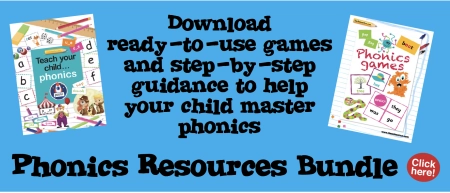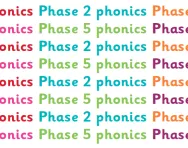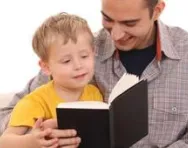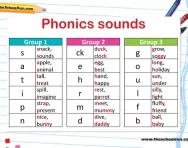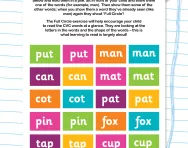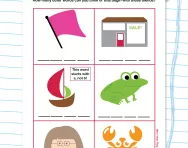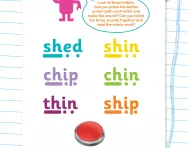Important update from TheSchoolRun
For the past 13 years, TheSchoolRun has been run by a small team of mums working from home, dedicated to providing quality educational resources to primary school parents. Unfortunately, rising supplier costs and falling revenue have made it impossible for us to continue operating, and we’ve had to make the difficult decision to close. The good news: We’ve arranged for another educational provider to take over many of our resources. These will be hosted on a new portal, where the content will be updated and expanded to support your child’s learning.
What this means for subscribers:
- Your subscription is still active, and for now, you can keep using the website as normal — just log in with your usual details to access all our articles and resources*.
- In a few months, all resources will move to the new portal. You’ll continue to have access there until your subscription ends. We’ll send you full details nearer the time.
- As a thank you for your support, we’ll also be sending you 16 primary school eBooks (worth £108.84) to download and keep.
A few changes to be aware of:
- The Learning Journey weekly email has ended, but your child’s plan will still be updated on your dashboard each Monday. Just log in to see the recommended worksheets.
- The 11+ weekly emails have now ended. We sent you all the remaining emails in the series at the end of March — please check your inbox (and spam folder) if you haven’t seen them. You can also follow the full programme here: 11+ Learning Journey.
If you have any questions, please contact us at [email protected]. Thank you for being part of our journey it’s been a privilege to support your family’s learning.
*If you need to reset your password, it will still work as usual. Please check your spam folder if the reset email doesn’t appear in your inbox.
What are CVC words, CCVC words and CVCC words?
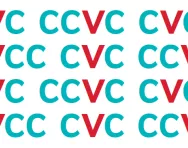
Contents:
What are CVC words?
Activities for CVC words
What are CCVC words?
Activities for CCVC words
What are CVCC words?
Activities for CVCC words
Consonant digraphs and vowel digraphs in phonics
Phonics information
What are CVC words?
A CVC word is a word that is made up of a consonant, vowel and consonant sound.
Cat, hot, tip, man and hut are all CVC words.
They're often some of the first words children learn to read because they're simple and easy to sound out.
Let's break it down further:
- A consonant is the sound produced by partially or completely blocking the airflow as it leaves the vocal tract. Examples of consonant sounds include /b/, /c/, /d/, /f/, /g/, etc. In CVC words, the first and last letters are consonants.
- A vowel is the sound produced without significant constriction or blockage of airflow in the vocal tract. Examples of vowel sounds include /a/, /e/, /i/, /o/, /u/, etc. In CVC words, the vowel sound is in the middle.
Putting it all together, CVC words follow this pattern: Consonant-Vowel-Consonant.
Examples of CVC words:
Activities & resources for learning CVC words
What are CCVC words?
Consonant, consonant, vowel, consonant words, for example: trap, chop, stun, grit, shop.
This is a step up from CVC words, adding an extra consonant at the beginning. So, CCVC words are four-letter words where the first two letters are consonants, followed by a vowel, and then ending with a consonant.
Here's a breakdown:
- Consonant: The first and second letters are consonant sounds.
- Vowel: The third letter is a vowel sound.
- Consonant: The fourth and final letter is another consonant sound.
Examples of CCVC words:
Activities & resources for CCVC words
What are CVCC words?
Examples of CVCC (consonant, vowel, consonant, consonant) words are: hunt, fast, cart, milk, want
CVCC words are also part of early reading instruction and help children expand their vocabulary and reading skills. They're slightly more complex than CVC and CCVC words, but they're still manageable for young learners as they continue to develop their literacy skills.
Here's a simple breakdown:
- Consonant: the first letter is a consonant sound.
- Vowel: the second letter is a vowel sound.
- Consonant: The third and fourth letters are a consonant sounds.
Examples of CVCC words:
Activities & resources for CVCC words
Consonant digraphs and vowel digraphs in phonics
Children start to learn their letter sounds in Reception, then start to 'blend' sounds to read words.
As a first step children focus on decoding (reading) three-letter words arranged consonant, vowel, consonant (CVC words). They will learn other letter sounds, such as the consonants g, b, d, h and the remaining vowels e, o, u. A child who already knows all their letter sounds might be shown the CVC word 'pit' and asked to read it out loud. This is the point where they are required to use their knowledge of the individual sounds of each letter and 'blend' these letter sounds together, so they are saying the whole word and not three individual sounds.
CVC words don't have to be three-letter words, as the C, the V and the C refer to consonant and vowel sounds (which could be made up of more than one letter) rather than to individual letters of the alphabet.
Once children have learnt to read a variety of CVC words, they move onto reading digraphs (two letters that make up one sound). They will learn the sounds /ch/ and /sh/ and be shown how to represent these sounds as letters. They will also learn how to blend consonants, for example: they may be shown the two letters 'sp' and asked to say the sounds (/s/ and /p/) these letters make out loud.
Children then move onto reading CCVC words, such as chat, ship, frog, snap.
Once they have mastered these, they will move onto CVCC words, such as bash, card, send, mast.
Alongside this essential work on reading, they will be taught to form all their letters with a pencil on lines. The better they get at decoding (reading a written word out loud) the better they should get at encoding (spelling a spoken word on paper).
Phonics information for parents
For more information on phonics and how it's used to teach children to read look through our parents' guides, or find phonics worksheets and phonics games for your child to help them practise early reading at home.
